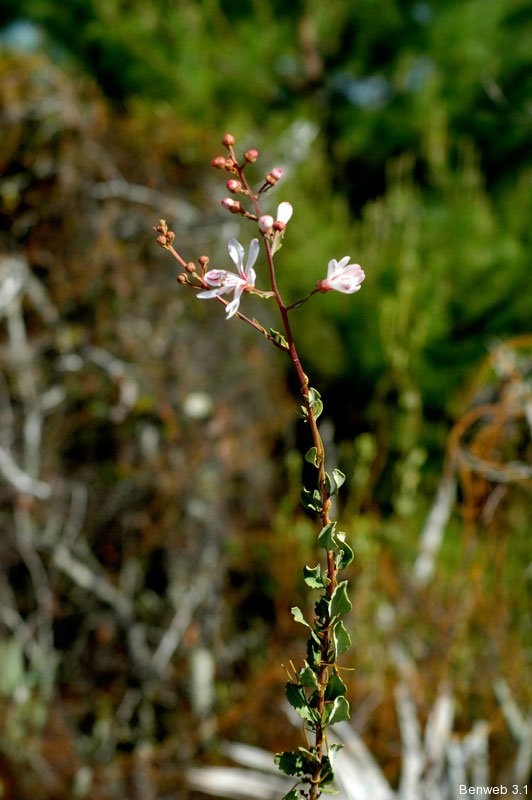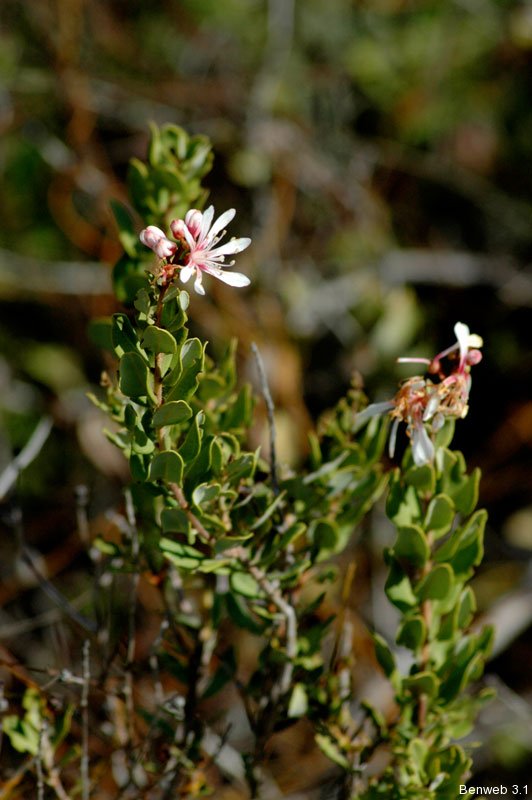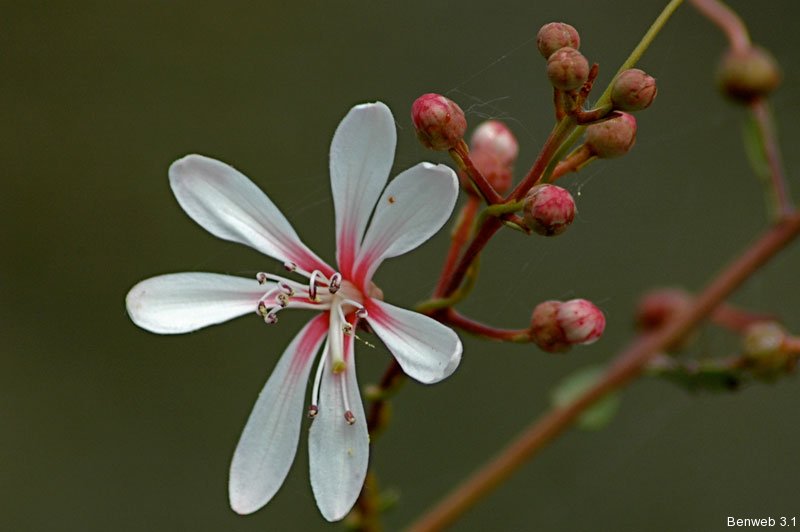Really, I’m asking. What is in a name? Tarflower is a beautiful plant of Florida’s scrub and pine flatland areas. It’s a large wildflower or good-sized shrub in the Ericaceae, or heath, family. The flower is distinctive, with its 7 pinkish white petals, completely free (i.e., not joined together), arrayed around those central pistils. The common name gives a good idea of its strategy to deter nectar snatchers (ants, houseflies, etc., who might be tempted to take its nectar without “paying” for it–that is, without performing the pollination services for which plants evolved their nectar-facilitated reproductive strategy): it traps freeloaders with a sticky secretion from the hairs on the stems.
Its scientific name, though, is a bit of a mystery. Several authorities (Taylor and Bell, Austin and Bass) call it Befaria racemosa, as does the University of Florida webpage that I link to at the beginning (the #1 Google hit for “Tarflower”). Austin and Bass go so far as to mention that the genus name is derived from the name of a Spanish officer named Bexar. Many authorities, among them the ISB website, simply correct the name to Bejaria without commentary. Other authorities, though, (e.g., W.K. Taylor) point out that Befaria is actually a mistake; the proper form of the name is Bejaria (which makes more sense if it truly is derived from Bexar).
Now why such learned writers as Austin and Bass would give the “incorrect” spelling to a name that they obviously know the derivation of, is beyond me. So far beyond me, that I went straight to the source: According to the USDA GRIN Taxonomy, Befaria is a “rejected original spelling that is unavailable for use.” Rejected by whom, I ask?
Bejaria, on the other hand, gets the comment “this spelling conserved (nom. cons.)(Vienna ICBN Art. 14.11 & App. III) against the original spelling ‘Befaria‘.” In other words, Etienne Pierre Ventenat named the plant according to Linnaeus’s misspelled Befaria, and later on, I suppose, someone named Mutis changed it to Bejaria? Or, is Mutis just the latin for changed, and everyone knows that the spelling of the genus name was changed?
To find out about the natural history of the genus, it would be hard to do better than this page from the New York Botanical Garden; if you’re too lazy to click the link, here are a couple of representative sentences:
It is characterized by 7-merous flowers, free petals, capsular fruits, non-appendaged anthers, and viscin threads intermixed with the pollen tetrads. It is sometimes considered morphologically and anatomically isolated within the Rhododendroideae.
If you’re still with me, you deserve a treat, so here is a little gallery of Tarflower from the Yamato Scrub:
But the question remains: what’s in a name? More specifically, what’s in this (generic) name? (So should I have asked, “More generically,” what’s in this name?)
Related Images:
no images were found



